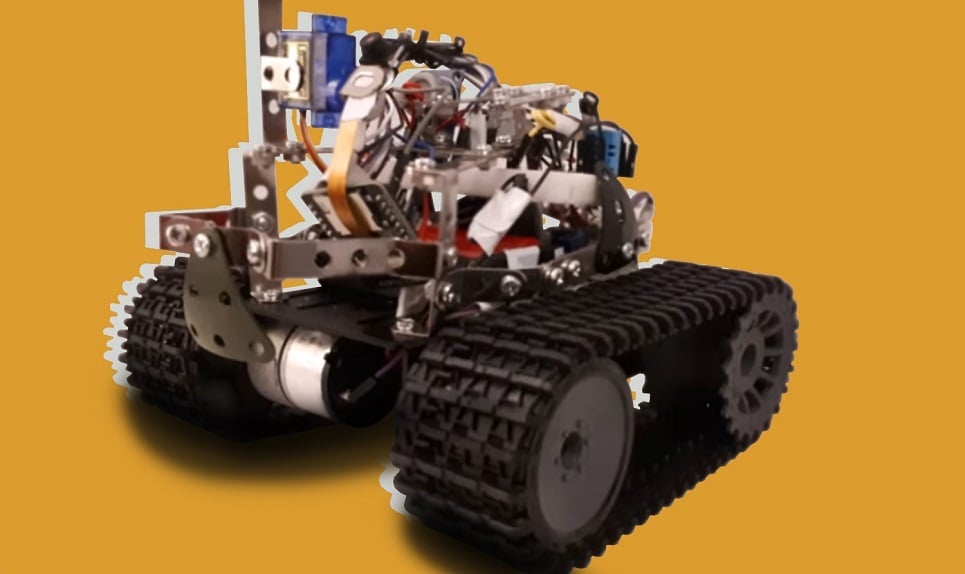
“LIvE SAVER” – is the name of a remote-controlled mobile robot that will assist the fire brigade in rescue operations. It was designed by Piotr Kurządkowski, a student at the WUT’s Faculty of Mechatronics and a volunteer firefighter, writes the Warsaw University of Technology in this press release.
“When the time came to choose an engineering thesis topic, I decided to combine two of my passions: serving in the volunteer fire department and my great interest in technology and robotics,” explains Piotr Kurządkowski. “I wanted to create something that was both functional and useful. After examining the firefighting market, speaking with friends from the OSP unit in Piątnica, and even consulting professional firefighters, I noticed deficiencies in robotic solutions that facilitate work for firefighters,”he explains.
Increasing firefighters’ efficiency
Self-propelled water cannons are currently available on mobile platforms, but their popularity remains low, and compact solutions for inspections are not available. We are talking about a small compact robot controlled by the operator, which allows us to significantly increase the efficiency of the firefighters’ actions while also ensuring that their health and safety are not endangered. “This is how the idea of the LIvE SAVER robot which will assist firefighters in searching for victims in multi-story building fires came to be” explains the young engineer.
The robot is placed on an aluminum chassis, with its tracks set in motion by two DC motors. A microcontroller serves as the brain of the robot, combining with the camera module and allowing for wireless communication. The set also includes explosive gas detectors, such as for methane and LPG, as well as a temperature and humidity sensor. The data obtained from them is critical in determining the course of the rescue operation. The camera has been placed on the servomechanism to provide a greater field of view in the vertical axis. The whole system is powered by four batteries.
The robot to explore first
The control panel can be accessed by entering the IP address into the browser. At the very top is a live image from the camera, and below that are buttons that control the robot’s movement. The sliders controlling the brightness of the light emitted by the LED, the speed value, and the servo position are also accessible. The next section contains buttons that activate temperature and humidity measurements, as well as the concentration of explosive gases at the bottom, which is displayed in green or red to indicate a potential danger.
“Without the robot, the firefighters would have to climb a few dozen meters each way in the building where they are for the first time, in a low position or even on their knees. As a result, the rescue operation will move more quickly. We receive information from the camera or sensors on a regular basis, which may influence the course and effectiveness of the firefighting operation,”explains Piotr Kurządkowski.
Improving the robot
The project is open and the author is already thinking about further improvements. For example, to better visualize the robot’s components, a dedicated housing must be constructed and implemented. A special controller with a large screen that can be operated while wearing gloves is also needed.
“I would like to continue talking to the fire department. I have already noticed great enthusiasm and interest in the subject,” notes Piotr Kurządkowski.
Also interesting: Start-up Apeiron enables robots to work together like ants
Selected for you!
Innovation Origins is the European platform for innovation news. In addition to the many reports from our own editors in 15 European countries, we select the most important press releases from reliable sources. This way you can stay up to date on what is happening in the world of innovation. Are you or do you know an organization that should not be missing from our list of selected sources? Then report to our editorial team.

